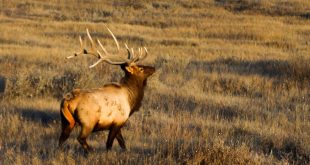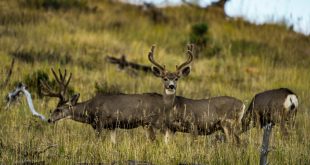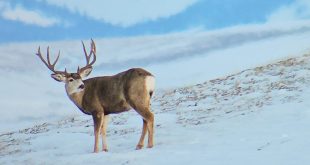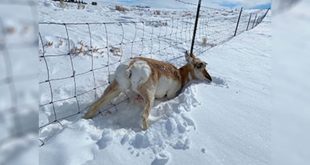
I’ve got some very positive news coming in from western Wyoming in regards to mule deer population and herd trends. Based on what we are currently seeing, a mule deer rebound could finally be taking shape in the famed Wyoming mule deer Region-G.
The Wyoming Game and Fish management team historically shoots for a minimum goal of 30 bucks per 100 does for the Region-G deer herd. As of this past spring the herd is running right about 45 bucks per 100 does. This is a very good sign for the health of the herd and its future viability and reproductive potential into the near future. This equates to a 50% increase in buck to doe ratio since the 2017 winter where the herd clocked a near 20-year low. A low that is only matched by the drastic all-time low of 25:100 that was recorded in the aftermath of the 2004 winter.

In addition, the fawn survival numbers from this spring are yet another positive sign for us to place our hope into. The fawn mortality from the 2021-2022 winter was estimated to be right around 20% which is a very low number, particularly when compared to the all-time high tof 86% set during the 2017 winter. For the past five years and counting the fawn survivability has been well over 70% for this deer herd. This should bode well for the future population growth of the deer herd over the next few years if current conditions continue. In a nutshell, there are a hell of a lot of younger bucks on the ground in this region right now.
A fact that may surprise some is the hard fact that this deer herd is currently being “under-hunted” by most historic measures. In 1992 nearly 13,000 hunters, resident and non-resident alike, hit the hills of this mule deer rich region in search of their buck of a lifetime. This fall barely 4,000 hunters will get the opportunity to head into the rugged country of this region hoping to strike mule deer gold. This represents a net 67% decrease in hunting pressure on this deer herd over the past 30-years and counting. Although the hunting pressure in this area can still feel very constricting, mostly due to the much shorter season duration under current management strategies, but also the fact that this deer herd is roughly half of what it was thirty years ago.

With these critical factors in the deer’s favor and very favorable habitat conditions I am very confident that while deer numbers will still be lacking in this area, the buck quality and hunter satisfaction in this region should be very solid this coming fall. For those 400 lucky non-resident hunters who managed to weather the draw storm and come out with a tag for this hunt in their pocket, I really think some good things are headed your way.
If we can manage to put a few more good years together on this trend I really think there could be a very solid rebound in store for this mule deer herd creating some very, very good mule deer hunting conditions over the next few years. Some welcome news on an otherwise rough mule deer landscape here in Wyoming.
 Eastmans' Official Blog | Mule Deer, Antelope, Elk Hunting and Bowhunting Magazine | Eastmans' Hunting Journals
Eastmans' Official Blog | Mule Deer, Antelope, Elk Hunting and Bowhunting Magazine | Eastmans' Hunting Journals





The lack of much discussion of the herd population and population trends and focus on population dynamics and hunter numbers renders this scientific sounding article psuedo-science. Population dynamics are an important factors for evaluating a deer population. But population numbers and trends are where the rubber hits the road when evaluating a deer herds sustainability.
“Underhunted” is a very subjective term. It seems to imply that WY is not allowing as many hunters hunt this deer herd as it should based. In citing that the herd is (only) down 50% and hunter numbers are down by greater proportion, 67%, the article seems to be making the pseudo-science claim that WY is erroneously suppressing deer hunter numbers below what they should be. There is no discussion of harvest rates. Hunters are generally more efficient than they used to be. Are the 67% less hunters killing 67% less deer or are they killing closer to the number harvested when there were more hunters. But there is little discussion of population objectives or trends. If hunter numbers are down so much why is the herd still down 50% from highs? This is a data point that should have been evaluated. Are there other mortalities that are too high for hunter number reductions that have occurred to increase population numbers? Population dynamics such as buck doe ratios and fawn mortality are important factors for evaluating herd health. But the rubber hits the road with population number trends. And down 50% is not a good indicator for the sustainability of the population. Is the population stable, increasing, or decreasing? In the big picture that is a more important factor than still important buck doe ratios and fawn mortality. I am no wildlife biologist but while studying for a geology degree I studied quite a bit of biology that included population biology. And based on that knowledge, this is a pseudo-scientific article that uses improper and incomplete scientific data to seemingly argue for more hunting pressure on this herd. Certainly it is possible that population trends do indicate that more hunter pressure is would be acceptable for this deer herd. But the evidence presented in this article does not allow for a conclusion one way or another if more hunter pressure is warranted or not.